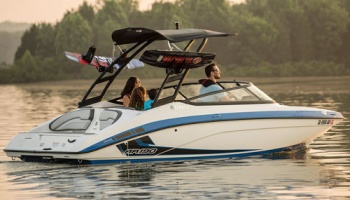Read through the posts here and thought I’d comment regarding the fuel burn of the SC engines. I made a similar post yesterday in another thread.
SC engines boost is rpm specific since the SC is engine driven, and centrifugal type SC’s are most efficient at rated rpm. Therefore the fuel delivery is for lack of a better way of putting it, linear in regards to rpm. So you are not going to see fuel burn numbers that are close to the NA version of the engine.
However, if the SVHO motor was turbocharged that would be a different story as a turbocharged engines boost is directly proportional to the amount of fuel being burned and engine speed, and a turbo has no parasitic losses like a SC does which is usually 7-10%. So very rough math, if the output of the 1.8L SC engine is 250 net, gross hp is around 280 if the SC takes 10% to turn it, or there abouts. Restated, at any given rpm the SC engine is producing 10% more power than is being used to just drive the pump.
The big advantage a SC has over a turbo is instant boost / power, while a turbo takes a bit to spool up, and they’re small, and simple to install. The big advantage a turbo has is that it will produce the same peak power at high altitude where as the SC engine will experience roughly 1.5% hp loss Per 1000’ of elevation gain. NA engines lose a minimum of 3% hp per 1000’ of elevation gain, usually more.
There are also hybrid engines that use a SC and turbochargers. With that set up you get the instant boost of the SC, and when the turbos spool up the boost is coming from the turbos and the parasitic losses of the SC go away since there is no longer a pressure differential across the SC. First time I saw that was in the crew boats I used to take to the off shore oil rigs... twin Detroit diesels that were supercharged with twin turbochargers. These boats were 60-70 feet long and had been repurposed from the oil fields in the bayou’s to the ocean. The Capt told me in their original set up they would cruise at 50 Knots. They had been re-propped to only do 25 knots, even with 50 guys on that boat the capt had to be careful how hard he accelerated... pretty awesome... sorry for the segue, good memories.
Here is boat test & boating magazines fuel burn test data on the 2021 255 SD (1.8L NA) top, and the 2021 255 FSH Sport E (1.8L SC) Bottom.
View attachment 142112
View attachment 142111








